
What’s going on out on the land?

White-tailed Deer feeding sign at Kinghurst
Recently, at a TCNA “tracker tuesday” call, there was a challenge proposed: on your next tracking outing, practice following the deer or the rabbits and see if you can find 10 plants which they fed on. For me in my area, the deer would be White-tailed Deer and the rabbits would be Eastern Cottontails. While I have been observing the Cottontails loosely at work with my students, for this tracking outing with the Earth Tracks Wildlife Tracking Apprenticeship, we focused on the White-tails.
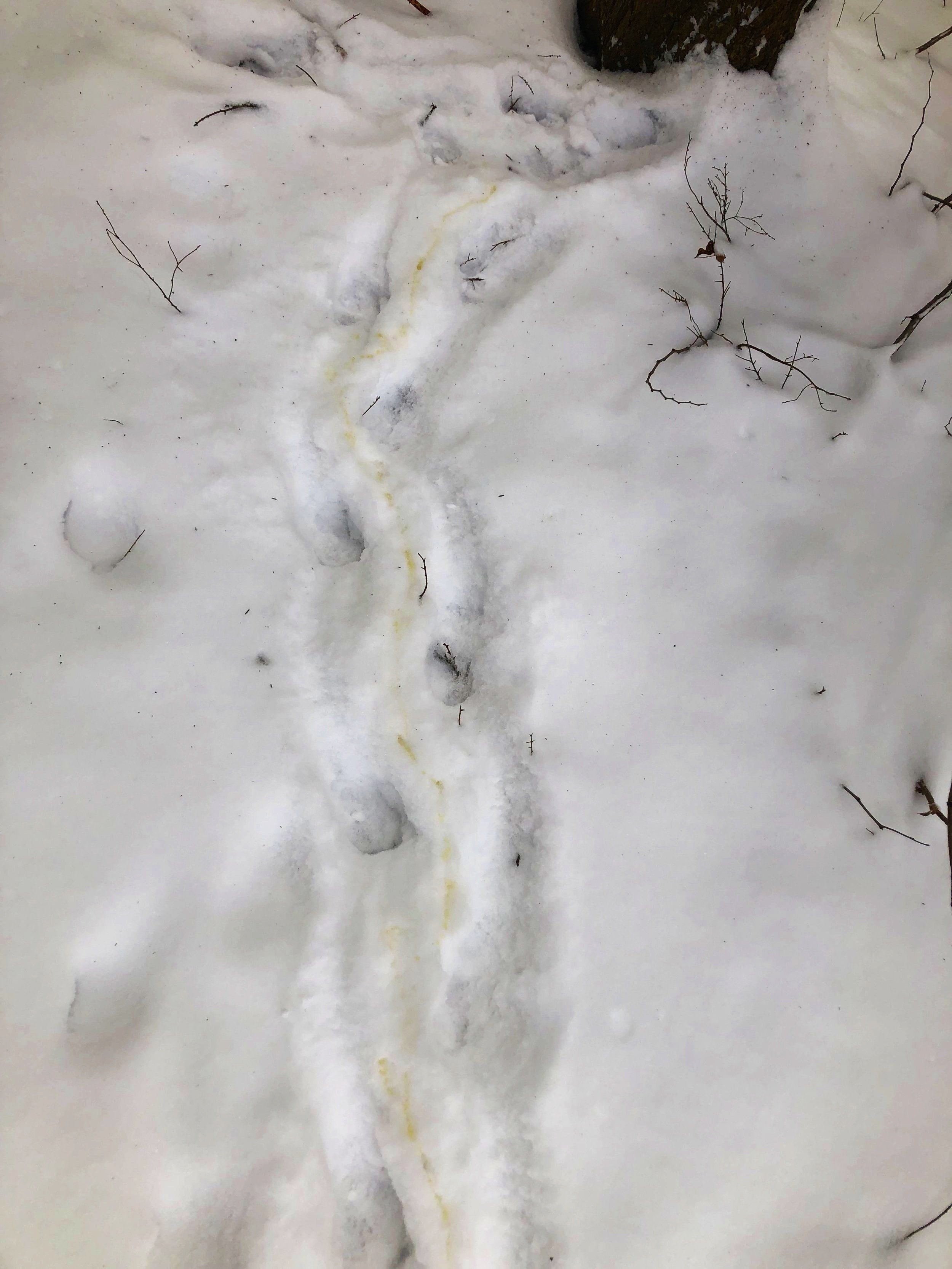
Trailing Porcupine at Dunby rd
I knew who the trail belonged to pretty much right away due to the oscillating midline that ran through the length of the furrowed trough in the snow and the occasional spotting of urine that was sprinkled intermittently along the run. This was the trail of the North American Porcupine, a common fixture in the forests of Dunby rd.
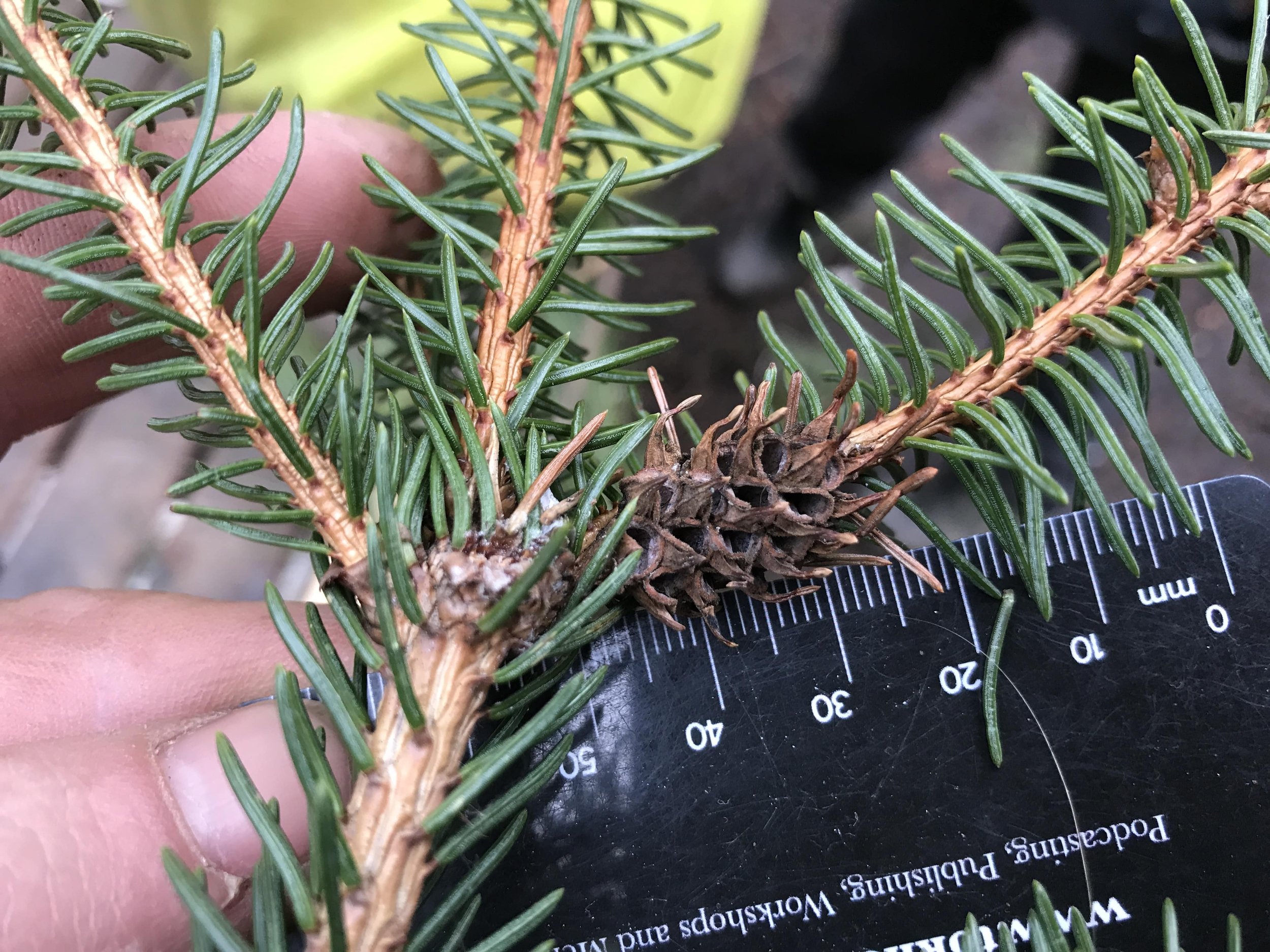
Spruce Pineapple Galls
For a few years I have come across a gall on Spruces all over the Eramosa River Valley. Most of the Spruces are Norway Spruces , but I have also found them on White Spruce. They were mysterious to me so I looked them up a couple of years ago and learned that they were called the Pineapple Spruce Gall, or Spruce Pineapple Gall, or Eastern Spruce Gall depending on who you’re asking, but that was where my knowledge ended. Recently, after coming across them again, I decided I needed to learn a little bit more about them.
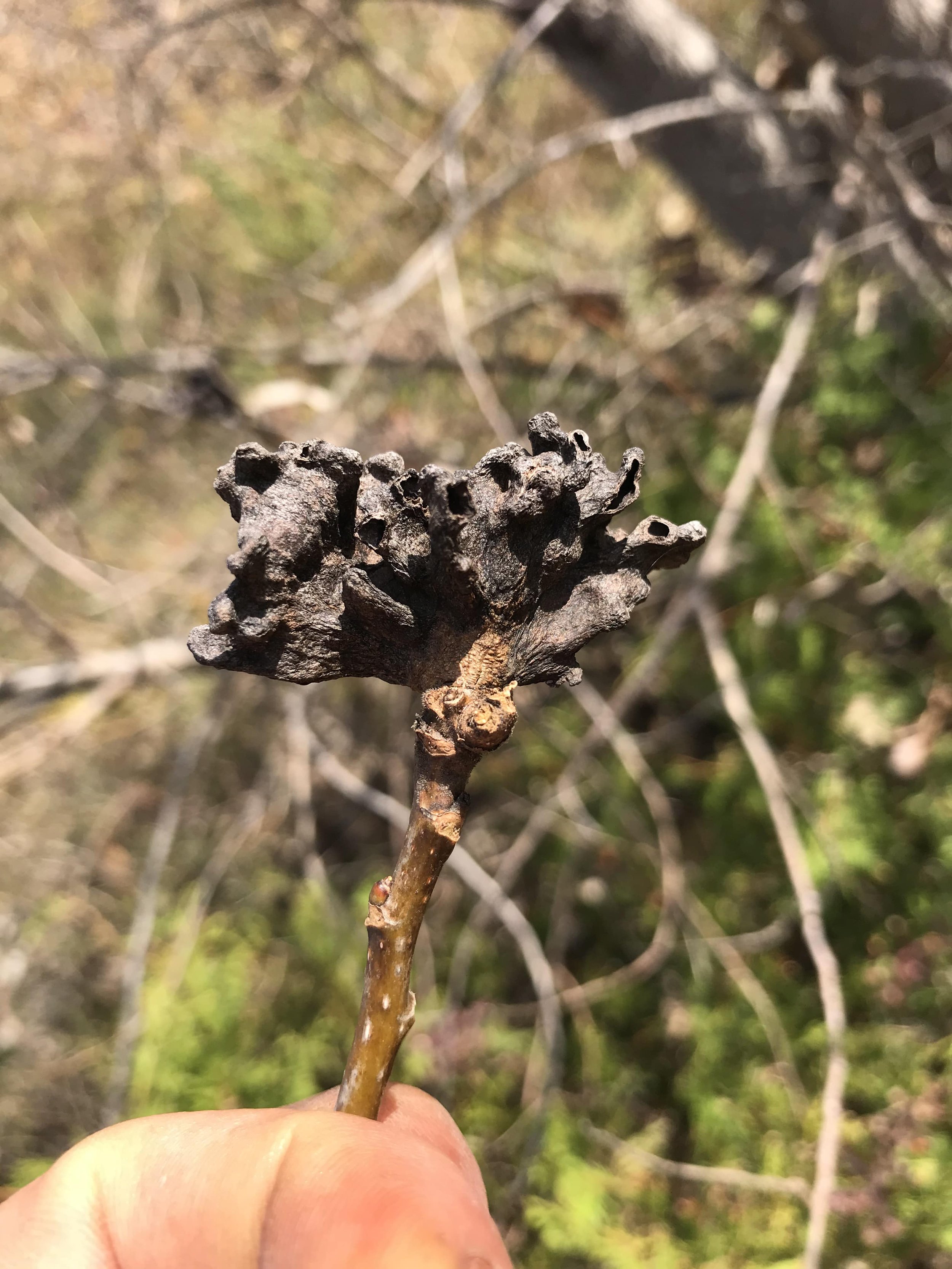
Poplar Vagabond Gall Aphid
I have been keeping a Question Book for years. It’s the greatest textbook I have ever owned. Each loving volume has been authored in partnership between the land and my own geysering, never-settling, curiosity. There have been many questions answered through research in my own library, the local university library, and online. For as many questions which have been answered, there are pages of unanswered mysteries. This is not for lack of searching, but perhaps the research has not come out yet, or I just don’t know where to look. Luckily today will be an indepth answer as to what the hell I have seen growing on the Poplar trees.

Field Botanists of Ontario Trip Report for Main Tract Mushroom I.D. workshop
Pulling in to the parking area at Main Tract, the biggest of the tracts of the Dufferin County Forest (coming in at 607 hectares or 1,501 acres), my first thought was that I was way too early.
We were supposed to meet for 9:50am, and I was arriving early for 9:30. It was going to be my first outing with the FBO and I really wanted to arrive on time. Luckily I did arrive early as the parking lot was sandy which meant some good time looking for bird and invertibrate tracks while waiting for my fellow fungal nerds.

Eastern Tent Caterpillar Egg Masses
We were in the midst of a mock evaluation at Mono Cliffs provincial park, making our way slowly through an old orchard which had been left to rewild, when Tamara called our evaluator Alexis over to ask if she could suggest a question for the evaluation. Only thing I heard from their quick conversation was “this will be a hard one”. They directed our attention to the end of an Apple branch where a small jeweled formation wrapped around a thin twig, like a bangle or elaborate armband. This broad ring or twig-band, about 3 cm long, seemed to be made up of smaller gemlike circles of gold lacquered together. These smaller circles were about .6 mm in diameter and tightly packed together. There could’ve been 200 of the small gold circles wrapped in this small shiny bundle. I made a guess right away that it must be an egg mass, but I didn’t know who made it. It was mysterious to me. I wrote out my answer and shared it with Tamara and waited for the big reveal.
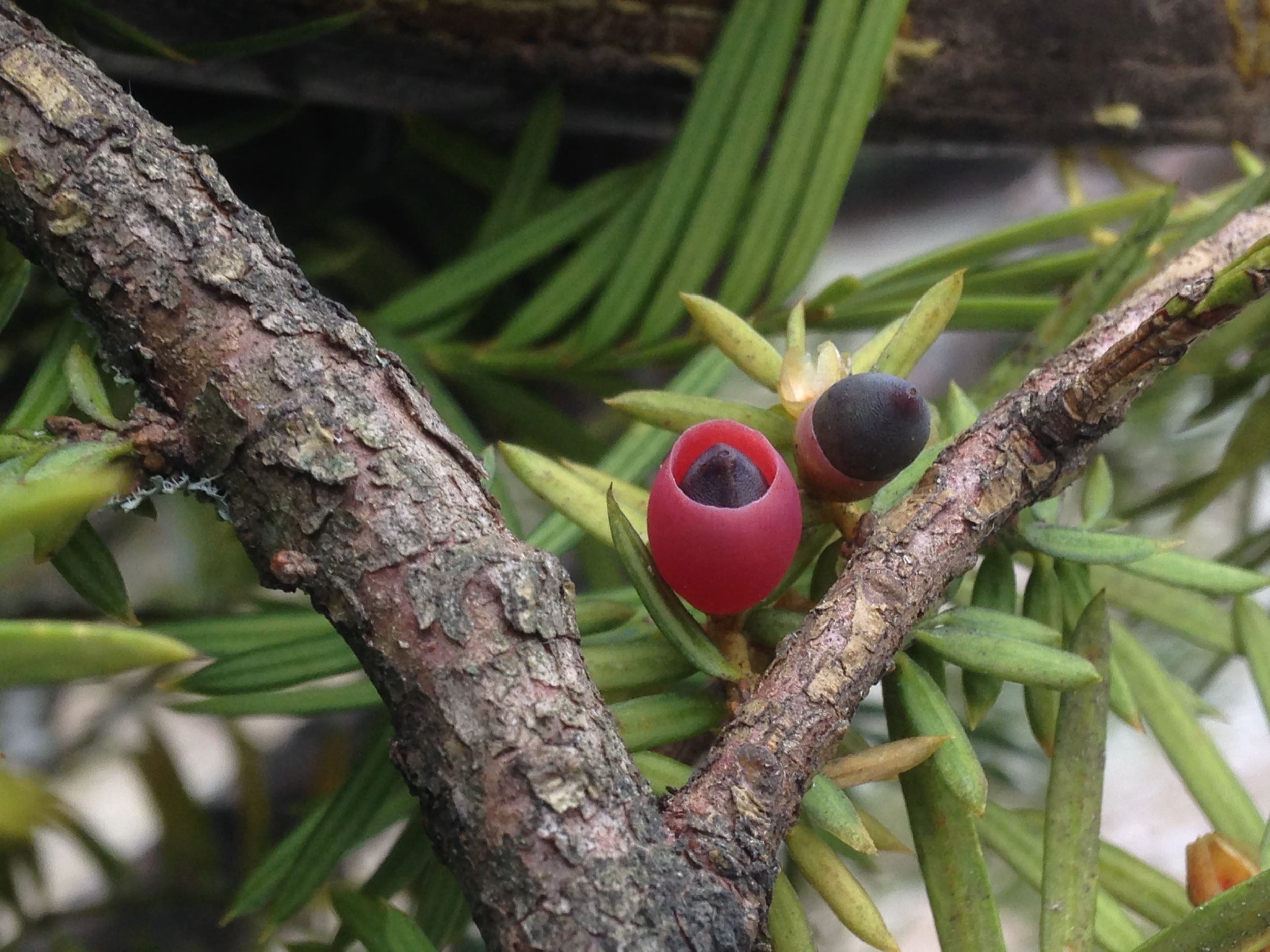
Death and Taxus?
A very brief exploration into Canada Yew and their deadly effects, especially on domesticated mammals.

Oak Apple Galls at Lake of Bays
Someone in our tracking crew had found a small, pale brown, hollow papery orb with spots on the surface with a couple of holes in it. I recognized it as an Oak Apple Gall, which my partner and I had found last year at Backus Woods. It wasn’t a green one, but it must be the same thing, right?
Last year, I may have looked up a bit on the Oak Apple Gall, but I no longer remember much. It’s like meeting someone again, but not remembering much of the details of your previous conversation. I had to ask some questions again, and here is some of what I have learned.
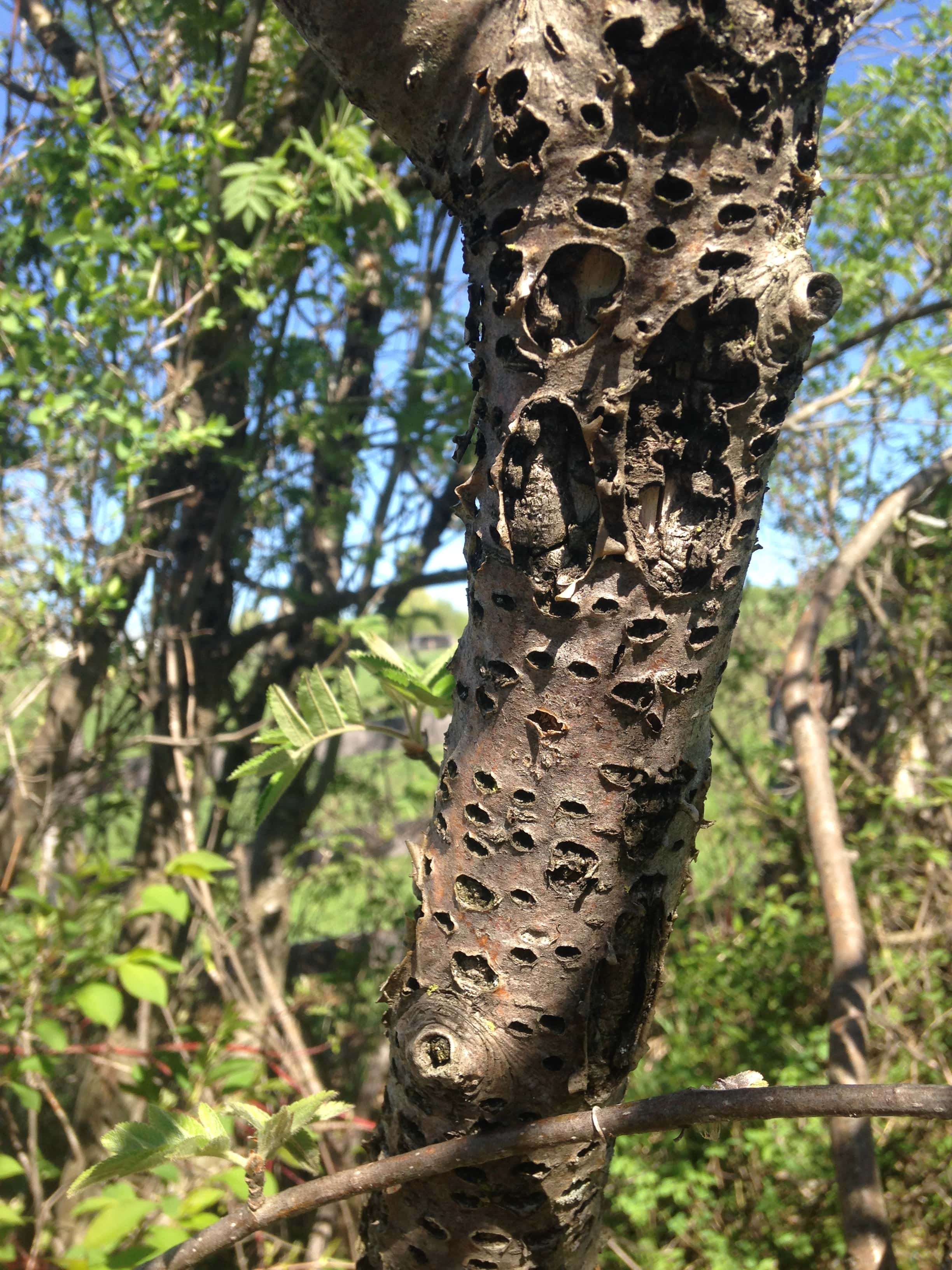
A Short Note On Sapsucker Ecologies
About 1o minutes North of Orangeville, along the fence line of Bruce Trail at Dunby rd, there are a couple of American Mountain Ash trees. These trees are related to the other Sorbus species from around the world, but this one is native to the area. Shorter trees, compound leaves, bright red fruit all help to identify these trees in the warmer months. But in the Winter and early Spring when the leaves and fruit have fallen, the bark becomes a great focal point for local ecologies.
The rows of small holes of various age and sizes freckle the bark like oversized lenticels. It kind of looks like a canker or fungal infection, but it’s not. It is actually the work of a meticulous and skilled member of the Picidae family; the Yellow-bellied Sapsucker, a bird which I have not seen that often, but I have come across their sign quite a bit.
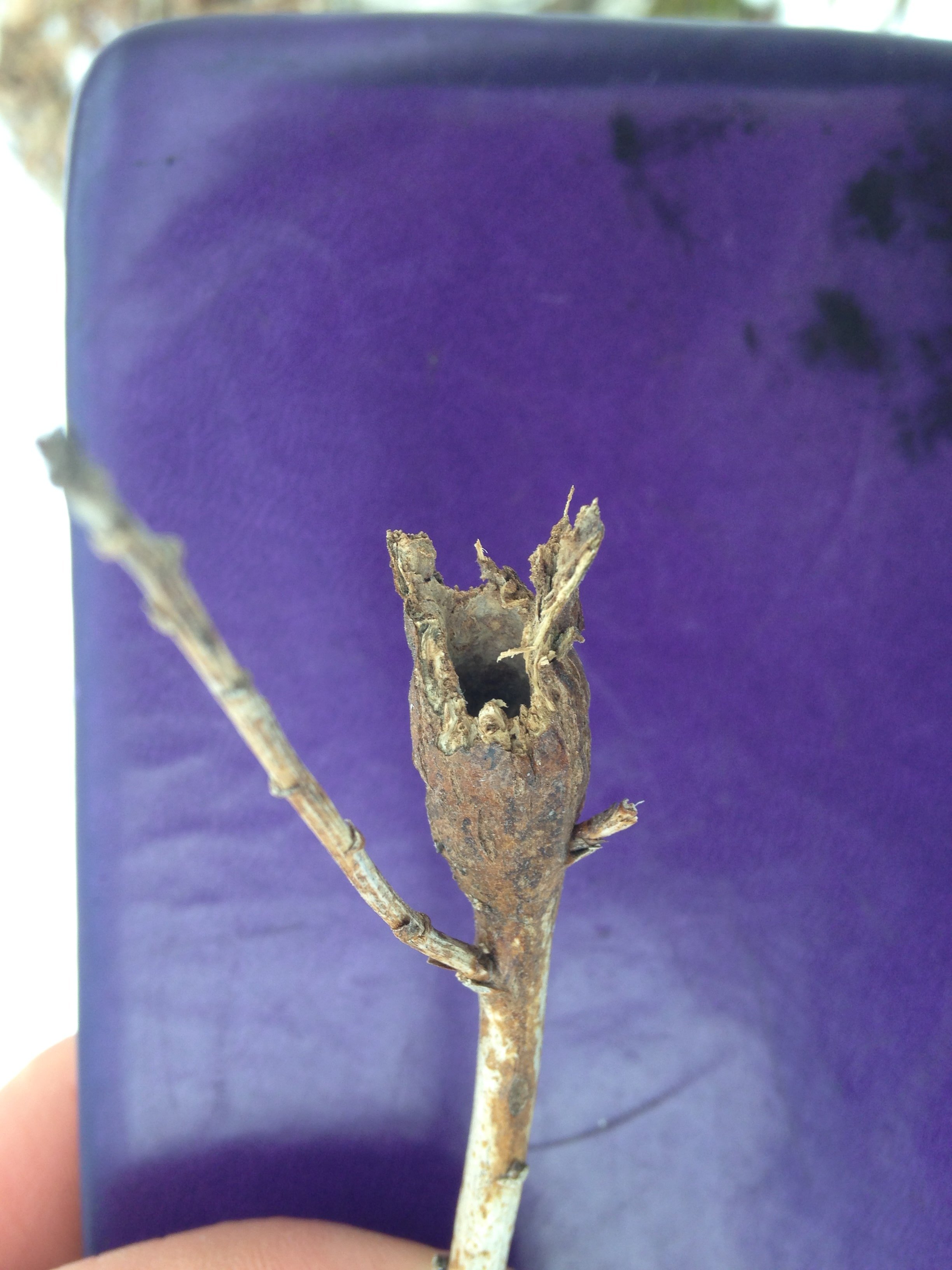
Tracking Bugs and Trees, 2022.03.05
On the drive up to Mono Cliffs, Maddie and I were talking in the car about some things we really wanted to pay attention to today. I was talking about trees and wanting to pay attention to what is going on around the trees, who is interacting with the trees, and who may be living on the trees. She had mentioned a desire to focus on bird tracks and sign, especially after focusing on Wild Turkeys for the past year. Little did we know…
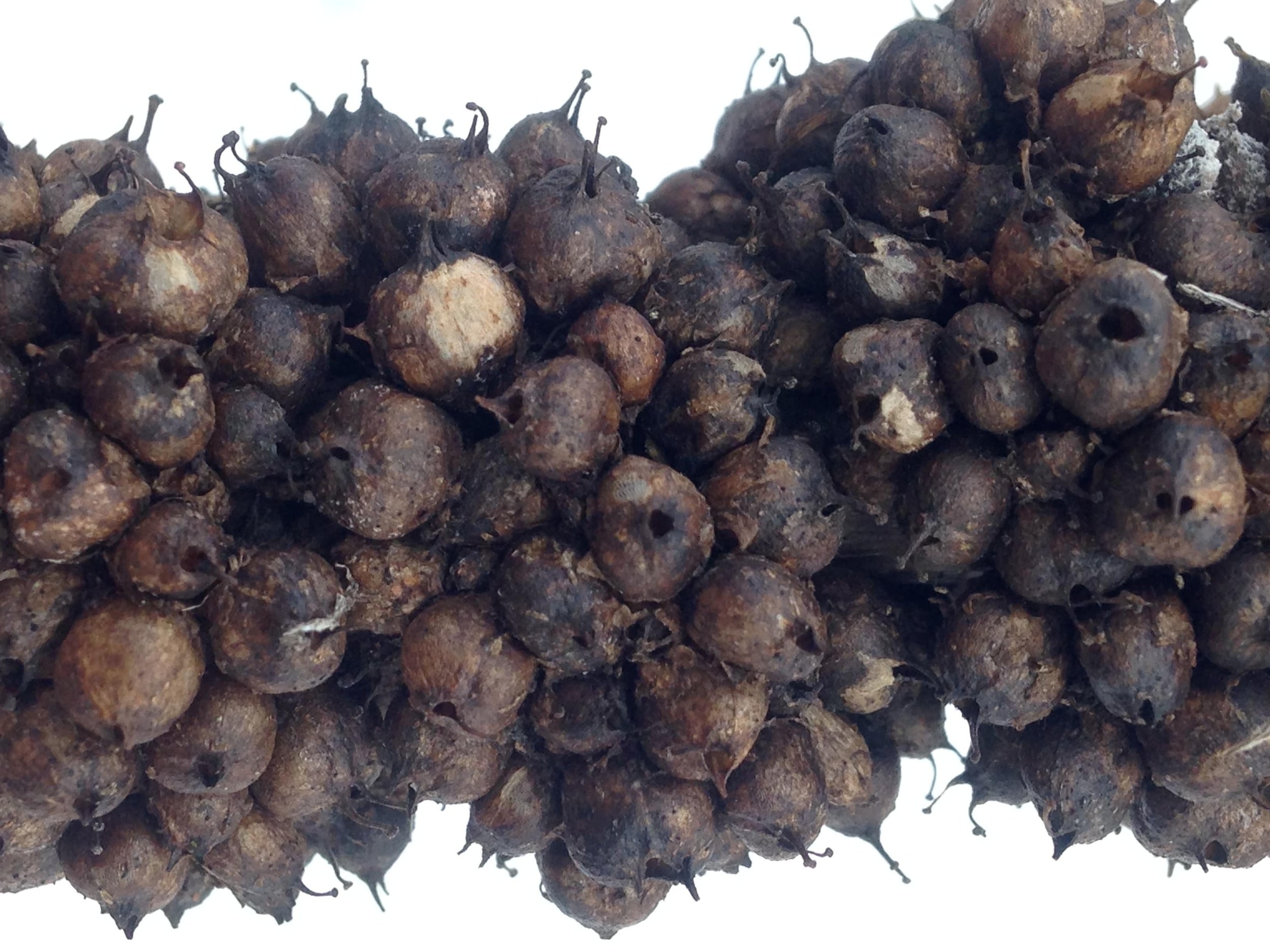
A Couple Late Winter Wonders
While out trailing some domestic Dogs, Short-tailed Weasel, and Red Fox, I encountered a couple of things that I did not know about and decided to examine. This post is just detailing those things a little more and sharing whatever information I can find so far.
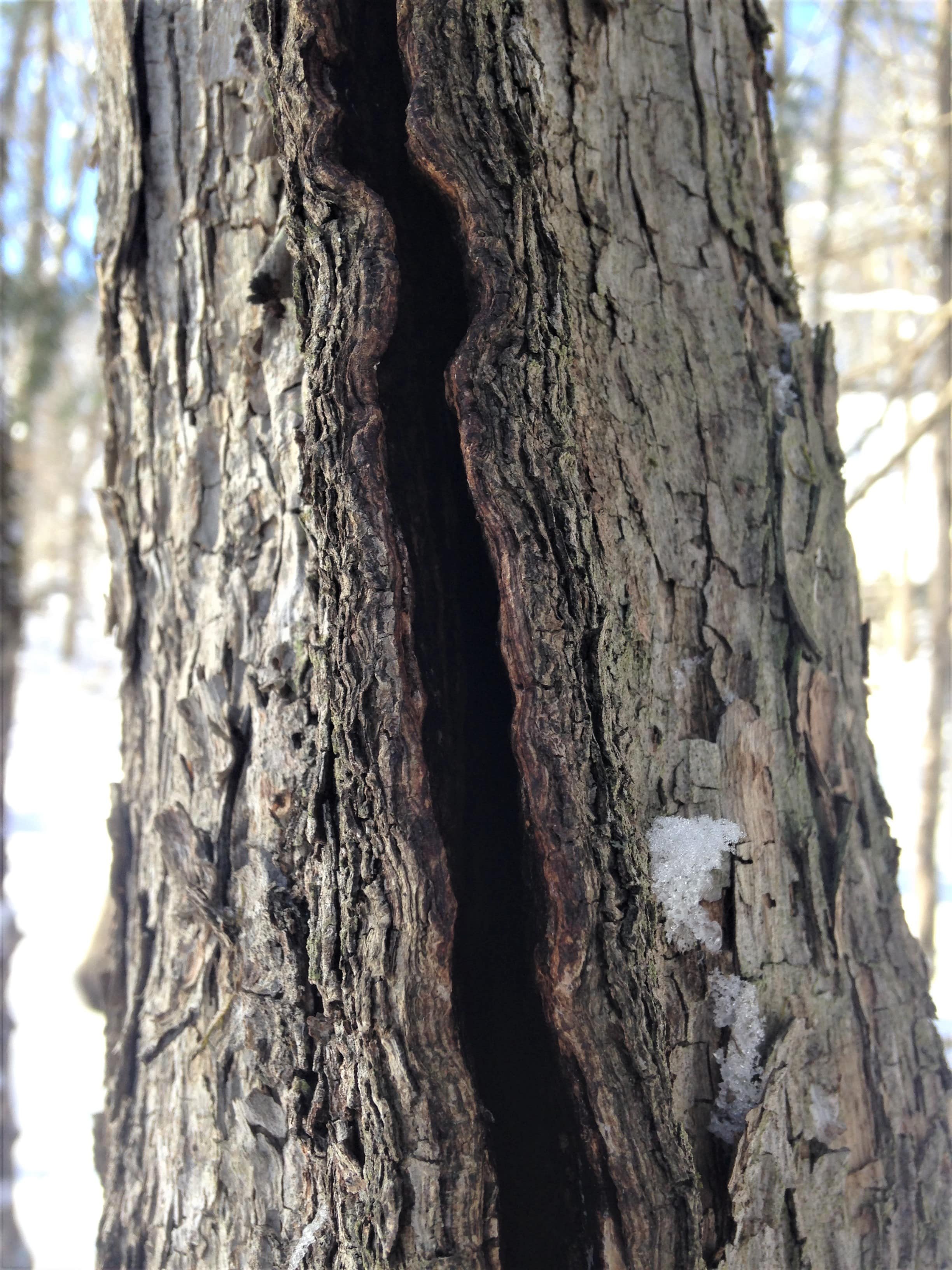
Frost Cracking
A couple of years ago on a trail which circled Sasajewun Lake at the Algonquin Wildlife Research Station, we came across a few trees that I thought had been struck by lightning. I saw fissures in the tree, some shallow, some deeper. These fissures wrapped in a long loose spiral around the trunk of the tree from fairly high up most of the way down. Many different tree species had these fissures and many were near the path. This is when I started to think again about lightning strikes. How did so many trees along a single path get struck by lightning? Turns out they didn’t.

Who are you? Trentepohlia Algae
A couple of days ago, I found sign of orange growth spreading across some tree bark. I didn’t know what it was but had seen it many times before and had never figured it out. Finally I did. I wanted a place to deposit everything I am learning about Trentepohlia so I figured I would make a blog post and update as I learn more. Here’s what I have so far.

In search of the Wild Heart of the Forest
Now is the time of year when things get dark and wet and quiet in the forest. When the tall dead stalks of the Joe Pye sway in the wind hoping to loose some seed in the blustery wind. When the mud is thick along the trails and the fallen leaves, once green, then yellow, turn to brown and black. This is when I search for the Wild Heart of the Forest.
I go out to sit, and listen. To the wind, the river and my own breathing, harmonizing with the chilling world. I go out to wander, and look. To the tracks, the trees, and the stars peering down from a distance unfathomable. I go out to be with the world, a wilder place than my home, a place I long to know more.

Snail trails on Birch
A lot of questions arise while looking at Snail feeding sign on a Birch tree at the Guelph Arboretum. Why Birch? Are they eating? How are they eating? What is the direction of travel?
Sometimes the answers are out there, and it’s just about looking a little deeper to figure it out.
